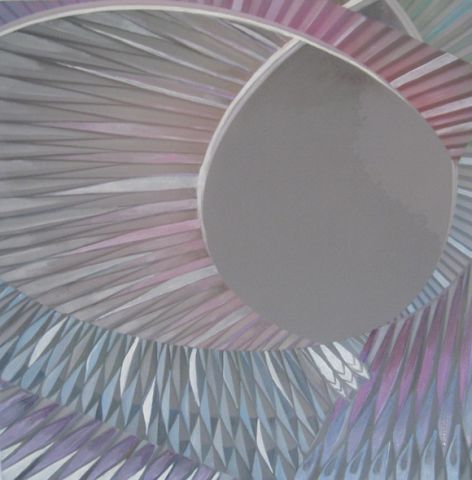Design and interruption
This is probably one of my more playful paintings. Using part of a ceiling rose I photographed in a café, I edited the image using Photoshop. Preciseness and exactness in my art are not my strongest points so it was a challenge to work with the repeating pattern within the image.
Continuing with my ideas of crossing borders between reality and the imagination, painting and digital art, I decided also to include the idea of design as part of my investigation. After all, once upon a time that ceiling rose was designed by someone with the intention of people hopefully looking up and admiring it. The person who designed it obviously had ideas of pattern and repetition as key components of their creation.
I manipulated my photographic image into a suggestion of an eye. ‘Here’s looking at you kid’ (that famous line in the film ‘Casablanca’) went through my mind at the time. Our eye wanders over the surface of the ceiling, observing the subtle colours and shadows and acknowledging the contours that are affected by these along with the sculptural aspects.
Once I had printed my edited image onto canvas I began to introduce paint onto it. I didn’t want anything too drastic; more of a delicate balance between the painted and the digital mark. After a while, to be honest, I got a bit bored with the image – I was losing that journey of transformation I normally experience. I think this was because of trying to contain myself within the design aspect of the piece. However I was keen to keep within these boundaries so would turn the piece around occasionally to give me a different perspective. I wanted to bring in something more with the paint whilst keeping the sense of design and repetition. I liked the way I could make parts of it recede away and other parts come forward – also to simulate daylight shifting across it – much as it happens when we look at an object during day.
I have kept the colours subdued and using paint deliberately overlapped 3 of the ‘tendrils’ or ‘lashes’. This interrupts the rhythm and pattern one might expect, and within this overlap I used diagonal markings to break it up further.
I am not sure whether I have finished it – it has to sit for a bit. I like the way it is quiet, your eye is allowed to gently wander over it, in your own space, in your own time.











